Landis makes Stage 7 comeback
Floyd Landis emerged from the rip tide he has been caught up in with the robust performance today of...
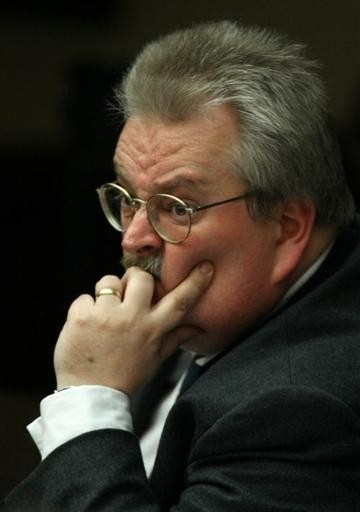
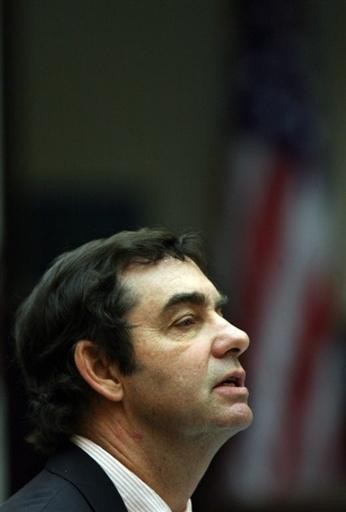
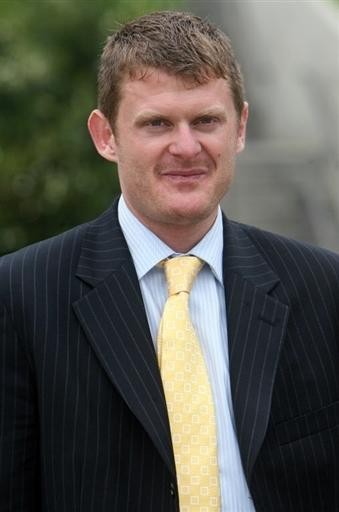
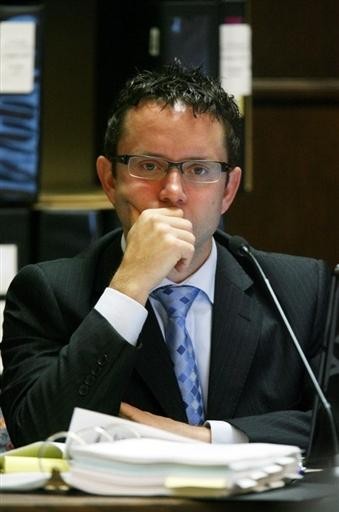
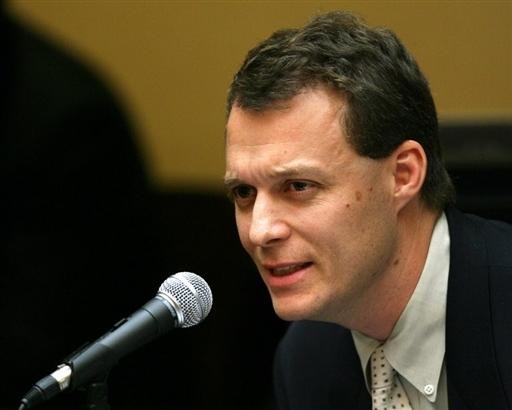
News feature: Floyd Landis' arbitration hearing - day 7, May 22, 2007
Floyd Landis emerged from the rip tide he has been caught up in with the robust performance today of a witness his team brought from Belfast, Ireland.
The crystal clear delivery and calm, systematic dismantling of LNDD practices - along with USADA's court room strategy - by a dapper, but authoritative and far more accessible chromatography science expert than any who have come before in the form of Wolfram Meier-Augenstein, was the most significant gain for the Landis team in seven, long, calamitous days.
Landis drew breath and strength and it showed on his face. He reflected on camera the light from his yellow tie. At times he beamed.
Meier-Augenstein, senior lecturer in environmental forensics at Queen's University, had done his homework. He brought with him multicoloured power point files that even included extra graphs and charts that anticipated the attorney's questions. That attorney was Maurice Suh, attorney for Mr. Landis, who had brought him over.
USADA was quick to jump all over the musical interplay between Suh and his witness before the purple and green Power Point slides that bore such suddenly readable titles as "Does background subtraction as practised by LNDD detract from carbon information?" objecting outright to the use of visual graphics to guide a witness.
USADA told the pair: "It's improper to have a witness read off a powerpoint - absolutely improper." It was okay to read questions but not to have the answers up on the screen in what it slammed as a pre-packaged slide show before they came out of the witness's mouth. "Solid data is what is required."
Get The Leadout Newsletter
The latest race content, interviews, features, reviews and expert buying guides, direct to your inbox!
The comparatively sharp exhibits along with the attire of the witness, whose royal blue tie with its gold embossments, chunky cuff links, black small finger ring, mod haircut and slightly portly appearance only seemed to increase his credibility.
Suh in response was almost indignant and begged the case for the overhead projector, a now antique piece of basic equipment that has been the dubious compass of the entire hearing, due to the exceptionally complicated nature of chromatography. He sounded like a teenager who was about to be deprived of his i-Pod.
USADA's exhibits of chromatography, it turned out, had never included overhead visuals in past hearings. Suh informed the hearing that USADA had only done a very summary job with its chromatograms and pleaded their exceptionally complex nature and need for a full literal picture.
In arguing for the displays, the lead attorney who had battled the clock furiously for a week reminded all of the "expedited nature" of arbitration.
His team, he said at another juncture, had been "pretty much parsing out minute-by-minute."
The way Meier-Augenstein synched with Suh and built over the hours to a steady crescendo of bafflement about LNDD's affairs left the rehearsing of the witness, however, a very lingering question.
Suh insisted on adjourning the hearing for a 15 minute recess and seeing him to the door literally and cutting off a reporter who did not realise this was one witness who could not be approached after close up of testimony.
Some, like Joe Papp could, and some could not, it was arbitrarily and politely revealed.
Of the range of disturbing gaps in LNDD practices and documentation that Meier-Augenstein drew attention to were chiefly its method. In answering a wilted Richard Young, the focus became the way the lab proceeded from one measurement to the next when it was necessary to verify an initial screening result (positive).
There appeared to be a gap in the "retention time" beyond what should have been a numeric internal check parameter.
The numeric value for the Landis samples was six, way outside normal parameters, he argued.
And when Meier-Augenstein tried to find the internal standard the Paris laboratory was using, he testified that he could not and that there in fact was none.
Through bafflement he could only hazard to guess what their method was - and this probably involved the delta value. "I tried to figure it out, they must use the delta value because that's the only thing they know about it," he said.
"I don't know. How do they do it?" he exclaimed in his excellent command of the English language.
"You're correct," he said: "There's nothing in the specs to say how (it is) they do it.... I tried to figure it out... I was completely mystified at that point."
The Meier-Augenstein testimony also drew attention to the fact that labs around the world are not in synch in terms of the instruments they use, a theme which has resounded throughout the week.
Young asked him, what different types of gas chromatography and mass spectrometry (GC/MS when performed together) he had in his lab, whether Hewlett Packard, Agilent or other brands. There were four or five possibilities.
"I did not have access to the same instruments as Dr. Brenna," he noted, deferring as he did many times to the key players in the field and their papers in a chorus of authority: Shackleton, Aguilera and Brenna.
At around this point, Brenna was noted to yawn - much to the mirth of the press gallery.
Once again, or inevitably, came the question "Let me ask you, Is this a good chromatogram?"
The wily Meier-Augenstein went to up the ante and tripped up Young at several turns, pretty much demolishing his bearings for the day. He pointed out more than one of the chromatograms Young was posting up on the board had nothing to do with steroids and were those of a fermentation experiment in one case which Young was attempting to compare to a steroid chromatogram. This was just like "apples and pears," he said.
Other relatively cursory issues appeared to be software that would just coast past a pair of positive peaks, resembling baked meringue it could only be assumed from the way Meier Augenstein was daintily waving his hands about in the air. It would only be programmed to recognise the negatives, he explained.
He also reminded the panel that everyone deserved the chance to a fair sample. Even cheaters.
USADA complained that it just got the data and had had no chance to review it.
Next up on the witness stand came an altogether impressive Ivy League alumnus John Amory - an andrologist, whose New York Times wedding notice says he is a descendant of James Amory who had an 80-acre farm that became a part of Central Park.
An associate professor of medicine and attending physician at the University of Washington in Seattle, he had looks and a college rower's history, and had already won a prestigious under-40 andrologist award. His field of expertise? Hypogonadal men in need of testosterone replacement and the male contraceptive among other things.
In fascinating testimony, he underlined what had already been covered, that there was no evidence that testosterone actually aided recovery or endurance athletes, but pointed to one of several top-notch studies that was groundbreaking in the field: that which showed it would boost muscle mass and that it could be of benefit to boxers for example.
He began a journey into the dynamics of exogenous testosterone application and what it would do to, among other things, a chromatogram.
The day otherwise began with the news of a letter e-mailed to those in Landis' loop that his sacked manager Will Geoghegan was about to enter rehab and that the letter writer, a doctor, had assumed his position on an interim basis.
In a letter sent out to Landis's loop, Dr Brent Kay of Loma Linda University Medical Center announced he would be handling Landis' affairs in an interim capacity.
Geoghegan, he writes in the letter that surfaced in blog postings on the Trust But Verify website, is in a "distraught state" and will be entering a rehabilitation program today.
While Floyd and the entire team find Will's actions regrettable and abhorrent, he is still a friend and we wish him the best in his recovery.
"It is my hope that we can make a seamless transition and continue to work together in our mutual best interests," says Kay, who is executive director of the OUCH Sports Medical Center and assistant professor of medicine. "I know that Floyd is eager to get through the last days of his hearing and to turn his focus toward his business responsibilities. He is very excited about our anticipated victory and is anxious to support the very few that have supported him."
Landis will take the stand for cross-examination tomorrow, a day after what was originally scheduled. Simon Davis, technical director of Mass Spec Solutions will also take the stand and closing arguments are set for Wednesday.
Photography
For a thumbnail gallery of these images, click here
Images by AFP Photo
- Floyd Landis arrives for day seven of his arbitration hearing following a 'rest day' on Sunday.
- Floyd Landis with his parents Paul and Arlene during the lunch break.
- Canadian judge Patrice Brunet listens the arguments on day seven.
- German professor Wolfram Meier-Augenstein, senior lecturer in environmental forensics at Queen's University, Belfast.
- USADA attorney Richard Young was not happy with the Landis team's use of a Powerpoint presentation.
- Doctor John Armory, associate professor of medicine and attending physician at the University of Washington in Seattle.
Images by Mitch Friedman/www.mitchophoto.com
- Landis' lead attorney Maurice Suh wanted permission to use overhead visuals to explain chromatography readings.
- Part of the Powerpoint presentation which the USADA objected to, saying it would guide the witness.
- Floyd Landis observes proceedings during day seven.
- Amber Landis was at her husband's side for another day.
- Landis leaves for the day, accompanied by Michael Henson, Executive Director of the Floyd Fairness Fund.
Cyclingnews' coverage of the Floyd Landis case
September 28, 2008 - Landis takes case to US federal court
September 10, 2008 - Landis signing with current Health Net-Maxxis team for 2009
July 1, 2008 - CAS delivers final blow to Landis legal challenge
June 30, 2008 - Landis loses final appeal
June 28, 2008 - Landis decision due Monday
March 12, 2008 - Landis' judgment day nears
October 21, 2007 - Landis files appeal with CAS
October 18, 2007 - AFLD takes another look at Landis case
Thursday, October 11 - Landis continues fight, appeals to CAS
Saturday, September 22 - UCI officially names Pereiro 2006 Tour champion, Landis case raises issues
Friday, September 21 - Landis' appeal denied, two year suspension levied